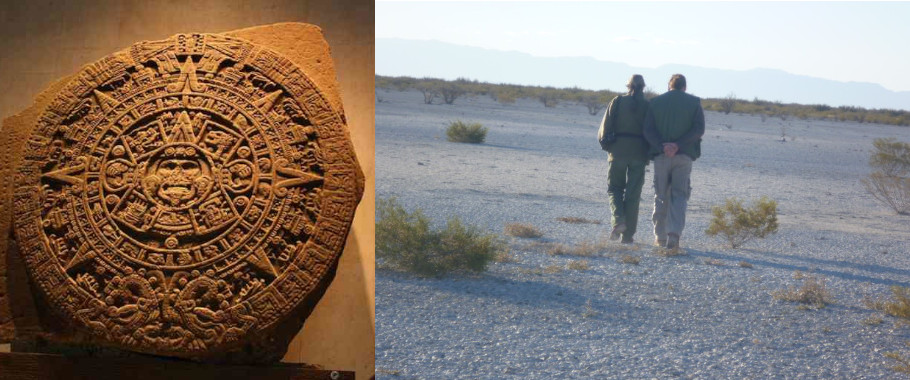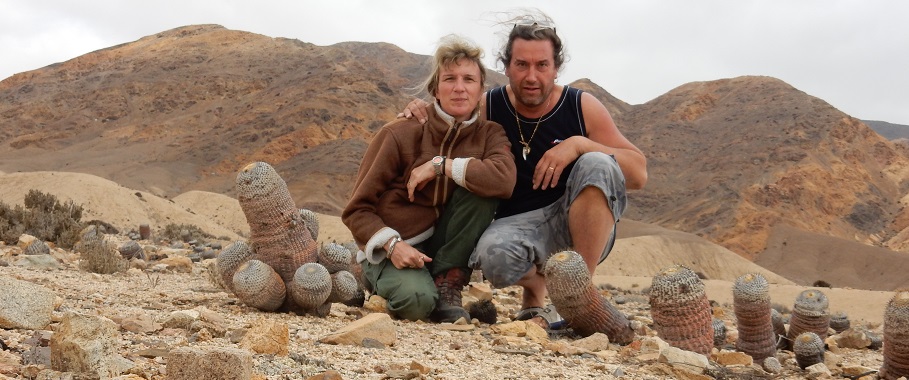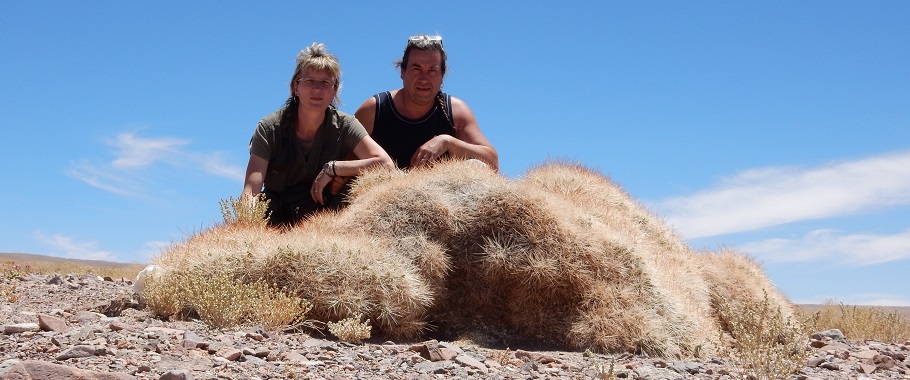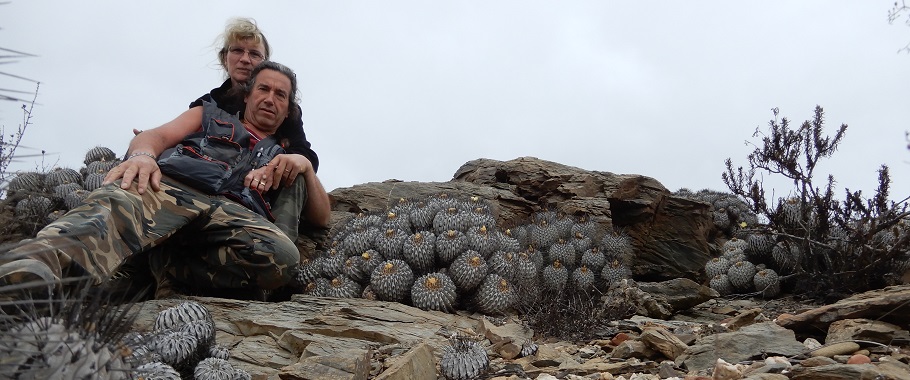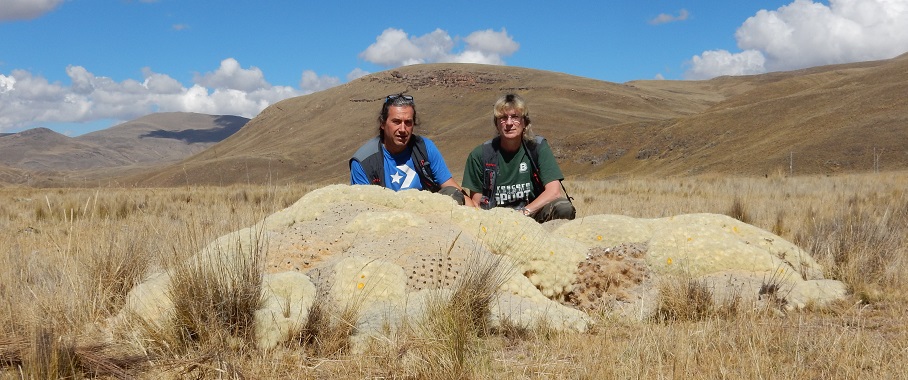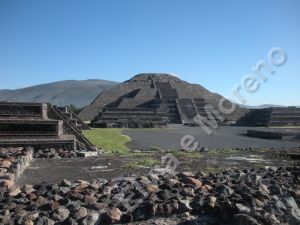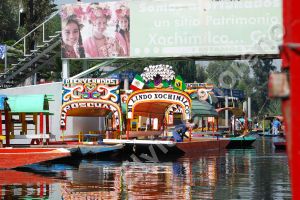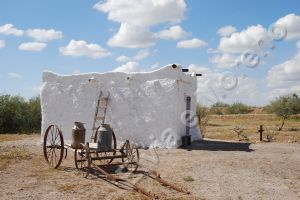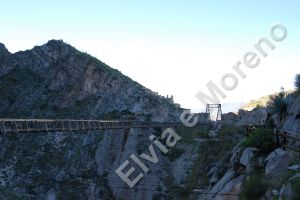- Details
- Kategorie: I Nostri Viaggi
- Veröffentlicht: Samstag, 01. Januar 2022 09:19
- Geschrieben von Elvia
- Zugriffe: 3276
Of the many trips we had to tell the first pick, and it was not easy, so the choice was random.
There is no reason to go on: the starting point would be to look for a particular plant, choosing the area where he lives, but then, expanding horizons, you end up interested in all that you see.
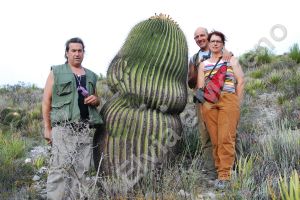
The main stages were made in the states of Zacatecas, Durango, Coahuila, Nuevo Leon, San Luis Potosi, Tamaulipas, Queretaro and Hidalgo ...
The holiday began a little bad, the taxi driver who was supposed to bring the Venice airport was late we had to call him and wake him up. The Iberia flight, which usually take, it was Venice-Madrid-Mexico City and vice versa.
Once lacked all 4 cases (in Venice they had not loaded!) We had to fill out all the forms of the loss and the Iberia staff assured us that for the next night would be delivered ... but another nasty surprise: even the car was ready, the charterer presented various excuses, but we could not have it until tomorrow.
The uncertainties of a trip "do it yourself" are to be solved in a short time: so we changed the program and what was to be the last day he became the first.
The next morning we took a taxi to the most important archaeological site of Northern Mexico:
Teotihuacan, one of the best preserved and most beautiful in the country. The city founded by the Maya is a sacred place, is the city of Quetzalcoat (the serpent god), the place chosen by the gods for the creation of the universe according to Mayan mythology. To visit it well you need at least half a day, there is the Pyramid of the Moon and the largest in the sun, then walk along the Avenue of the Dead extends to that of Quetzacoat decorated, the only come down to us as it was built; because this had been covered with a rear building, only during excavations for the restoration came to light the statues that decorate the staircase.
In the afternoon Xochimilco: that is what remains of the ancient capital lake Maya the great Tenochtitlan, full of canals and floating gardens, and now is a district of the capital.
The evening slating retrieved your luggage and the car, the next morning we had to leave early.
The Highway 57 brings us quickly to the north and then to deflect in Zacatecas.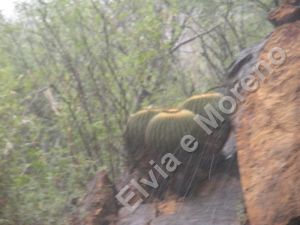
S.Juan Capistrano is a small country (not even reported in some maps) to the border with Nayarit, become famous in recent years for the discovery of a population of Echinocactus grusoni to 500 km away from the one known in Queretaro. Due to the inclement weather (heavy rain) we had to postpone the close encounter though, walking along the river and wet all, we were able to see them on the walls. Meeting postponed to next year's trip, but that's another story ...
Rose further north we enter the state of Durango, to Mapimi, we choose as the basis for a hotel in the village of Bermejillo and we make several excursions. The area del Silencio is a national park, you pay a ticket at the entrance and at certain times of the year you can not visit, but it is a place of beautiful landscapes and interesting plants, the name of the place comes from the fact that it is an area where, for long stretches, there is no coverage for mobile and radio.
The Bolson of Mapimi is a large flat, sparsely populated and full of succulent species, along the way you can make a detour, going up a steep dirt road, and get to the ghost town of Puente Ojuela: an old abandoned mining town (gold was mined and silver), it seems the setting of a western movie, with a suspension bridge (318 meters) designed by the famous Roebling brothers (those of the Brooklyn Bridge) over a throat chills (95 meters high).
The species that can be osservere are: Coryphantha valida, C. poselgeriana, C. macromeris, C. kraciki, C. difficilis, Corynopuntia grahami, Epithelantha micromeris, Echinomastus durangensis, Echinomastus mapimiensis, Echinocereus stramineus, Glandulicactus uncinatus, Ibervillea, Mammillaria lasiacantha, Mam. grusoni, Mam. gasseriana, Man.pottsii, Peniocereus, Thelocactus bicolor, etc..
After a couple of days we left to the east with destination Cuatrocienegas in Coahuila, interesting territory for the many varieties: Ariocarpus fissuratus, Ancistocactus uncinatus, Ancis. scheeri, Astropythum capricorne, Echinocactus texensis, Echin. horizonthalonius, Escobaria dasyacantha, Epithelantha micromeris, Epithelanta Bokey, Grusiona bradtiana, Coryphantha valida, Cor. poselgeriana, Cor. werdermanni, Thelocactus bicolor, Echeveria strictifolia, Echinomastus hispidus, Fouquieria shrevei, Fouqueria splendens, Corynopuntia moelleri, Opuntia anteocoensis, Mammillaria lenta, Mam. lasiacantha, Mam. plumosa and Mam. grusonii.
This town is also known for "poze", crystal clear water lakes connected by underground rivers, thanks to the karst terrain. Along the river Rio Mezquite, in one of poze, La Becerra (now closed due to pollution of the high number of tourists) you could take a bath in the evening and watch the water turtlesr. Entire area has been studied by a group of Italian cave-divers under the group name "La Venta".
 The journey continues moving us in Ramos Arizpe, with a bus transfer to the mine of La Paloma to be able to find the Thelocactus palomensis (flower magenta), other variety described by a few years. After 2 attempts in previous trips fruitless, this time we found them! In the middle of flowering Ariocarpus furfuraceus one can not see: they have 20 or more inches in diameter! Everything was in finding the right hill and after having made at least 20 ... He completed the day a swarm of monarch butterflies.
The journey continues moving us in Ramos Arizpe, with a bus transfer to the mine of La Paloma to be able to find the Thelocactus palomensis (flower magenta), other variety described by a few years. After 2 attempts in previous trips fruitless, this time we found them! In the middle of flowering Ariocarpus furfuraceus one can not see: they have 20 or more inches in diameter! Everything was in finding the right hill and after having made at least 20 ... He completed the day a swarm of monarch butterflies.
The outskirts of Ramos Arizpe us to find a nasty surprise: they are building a new highway to Monterrey (but what good is that if it already exists is not used much!!) And various sites where we knew there were some interesting plants or completely ruined, that bitterness.
The weather is not nice, an annoying drizzle prevent us from using digital cameras and blowing a wind chills.
In this area you can find: Mammillaria pottsii, Mam. plumosa, Mam. lenta, Mam. chionocephala, Epithelantha micromeris, Ep. Bokey, Ep. pachyriza elongata, Neolloydia conoidea, Gymnocactus beguinii, Ariocarpus furfuraceus , Astrophytum capricorne, Thelocactus bicolor, Thelo. rinconensis, Ibervillea, Echinocereus stramineus, Echin. pectinato, Ancistrocactus megarizhus, Lophophora williamsii, Echinomastus mariposensis.
We spend a few days in this area, reaching up to Icamole (Nuevo Leon), where it begins and where the areal dell'Epithelantha unguispina,lso out of the Canon Huasteca, you can find Agave victoriae reginae. This is the northernmost point of the trip: we return to Mexico D.F.
We could not fail to bring Sergio to Aramberry (Nuevo Leon) and surrounding areas for the amount of species "rare" who live there: Ariocarpus confusus, Geohintonia mexicana, Aztekium hintoni, Rapicactus zaragozae, Echeveria unguicolata, Echev. zaragozae, Echinocactus platyacanthus, Encephalocarpus strabiliformis, Ferocactus pilosus, Neolloydia conoidea, Thelocacatus conothelos, Thelo. conothelos var. auriantiacus, Thelo. buekii, Thelo. matudae, Thelo. argenteus, Mammillaria albicoma, Mam. candida, Mam. formosa, Turbinicarpus gracilis, Ibervillea, Opuntia tunicata.
Logically, to see the Geohintonia, there is an established practice by the locals: just go down the road that descends into the valley where he lives, coming right up to see what you're doing. Accompany you, control your behavior and ask for a fee for the ride in their territory (we paid 100 pesos each). The 2 populations, both Geohintonia that Aztekium, enjoy good health, thanks to the ease of retrieval on the market: it puo'dire which, if not a new road will be built here too, the plants can rest assured.
Going down to stop Matheuala (San Luis Potosi) with the classic ride up to Real de Catorce.
Plants in the area: Ariocarpus hintoni, Ario. furfuraceus, Turbinicarpus klinkerianus, Turb. frailensis, Turb. Polaski, Echeveria catorce, Echev. lutea, Echev. sp., Glandulicactus uncinatus, Mammillaria crinita var. aurihamata, Mam. candida and Lophophora williamsii.
Continuing we get in Tamaulipas, destination Tula valley and its surroundings. From Las Tablas south to La Reforma in the north you can find: Ancistrocactus megarhizius, Obregonia denegrii, Astrophytum myriostigma, Echinocactus texensis, Echin. horizonthalonius, Echinocereus tulensis, Echin. pentalophus, Echin. pectinato, Ferocactus echidne, Mammillaria picta, Mam. viereckii, Mam. baumii, Mam. candida, Mam. surculosa, Mam. microthele, Ariocarpus trigonus Ario. kotschoubeyanus, Ario. kotschoubeyanus albiflorus, Ario. agavoides, Leuchtenbergia principis, Echeveria, Lophpohora koeresii, Turbinicarpus lophoporoides, Turb. andersonii, Coryphantha maiz-tablasensis, Ibervillea tenuisecta, Thelocactus tulensis, Neolloydia conoidea, Neolloydia inexpectata, Ferocactus hamatacanthus, Fero. victoriensis.
Only a few states: San Luis Potosi is another one of those must-see places to see the plants, the only sore point is that the territory to Cerritos has changed a lot after 8 years. The vegetation is lush, have grown a lot of medium-high shrubs that make it difficult to walk, and the observation of plants: nothing is as we remembered, half a disappointment. Fortunately, the area of the Sierra de Alvarez, with the Valle de los Fantasmas, surprises.
In Queretaro we go to Cadereyta, where we have a friend, Lucas, who runs a good restaurant, and there is a good hotel. The area offers a wide variety of plants including the Echinocactus grusonii is the best known. We take a boat to Tzibanza, a village on the banks of the "Presa Zimapan", and we do bring to the wall where they live. Nearby Peak Bernal go to see the Turbinicarpus pseudomacrochele, convinced that they do not find almost nothing (10 years ago we were hardly able to see a dozen plants); great was the surprise of finding, reached the top of the hill where they live, a great amount of both adults and young people: this means that the reproduction and commercialization prevented the collection made in habitat. Plants in this area are: Astrophytum ornatum, Calibanus hookeri, Coryphantha erecta, Echeveria subrigida, Echinocactus grusonii, Echin. platyacanthus, Echin. glaucescens, Mammillaria elongata, Mam. parkinsonii, Mam. compressa, Mam. obconella, Pachyphitum, Plumeria, Strombocactus disciformis, Stromb. corregidorae, Thelocacatus leuchacanthus, Thelo. hastifer.
The last days we spend in Hidalgo. From Mineral de Monte arrives in Barranca Metzitlan with all of his considerable variety: from the Fouquieria fasciculata, Mammillaria humboldtii, Astrophytum ornatum, Bombax ellipticum, Cephalocereus senilis, Echinocactus glaucescens, Echinocactus platyacanthus, Echeveria bifida, Echinofossulocactus sp., Gymnocactus horripilus, Mammilaria Geminispina , Mam. schiedeana, Pachyphitum.
Road runs along the valley in a very beautiful landscape, you have to make detours on dirt roads to find varieties.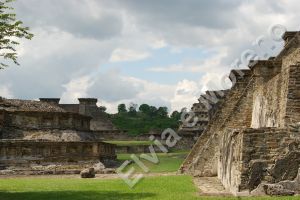
On the penultimate day we dedicate again to archeology. The road to get to the site puts a strain on the driver, are curved and curved for many miles, the road is not very wide, passing through many villages and you have to arm yourself with patience, but to see the site of El Taijn amply repays the efforts , despite being a bit out of reach. Here we are in Veracruz. The main structures are the pyramid of the niches and the game of pelota, decorated with beautiful sculptures. Taijn city means thunder and, also for this reason, it is not known exactly who built it.
We are almost come to the end: on the way back to Mexico City can not miss a step in Tula de Allende, the ancient capital of the Toltecs (later used by the Maya and finally sacked by the Aztecs), to see the Atlanteans. Towards evening arrived at the hotel, after having returned the car, we take leave of this chaotic metropolis: the plane the next day will bring us back home.
We do not know what Sergio has enjoyed most. Usually the first trip is a kind of intoxication, was so taken by the excitement that you have to go home to see if you really liked it, despite all the hardships that you may encounter there. Nevertheless see the landscapes, the colors, the plants do not have equal for those who love nature.
TO SEE THE FOTO GALLERY CLICK HERE

